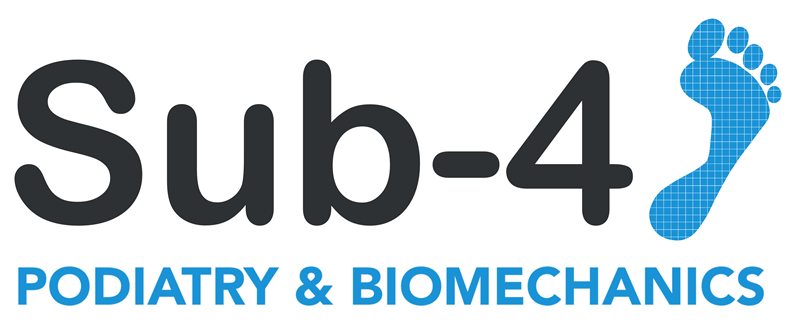Case Study A (Tom)
This 25 year old, 15 stone male client came into me with recurrent right knee pain, lower back pain over many years whilst standing or flexing forwards and left calf pain. He had a physical job and liked running to stay fit. The more activity he did the worse it became, and other practitioners were failing to help him.
I carried out a Level 2, two-hour assessment:
During the assessment I noticed he had a longer left leg and excessively pronated in his feet. He was wearing unsupportive neutral running shoes and ran mainly on the roads. After a thorough assessment carrying out many tests of his posture, leg length, sacroiliac joint, gait motion patterns and pressure plate analysis I found the following.
Tom had a longer left leg by 10 mm; this was a natural bony difference that could not be changed. We diagnosed this using our new innovation the Digital Pelvic Inclinometer (DPI), which helped us find out what type of leg length difference it was. Tom was compensation for the longer left leg by rotating the left side of the pelvis backwards, creating dysfunction at pelvic and spinal level. The pelvis created excessive internal rotation of the left leg during compensation and along with the flat feet, caused a calf strain. The shorter right leg had a weaker right quad muscles created by reduced flexion, because it as the short limb. During running which required increased knee flexion, the right quad was not strong enough to control knee motion resulting in tissue strain and eventual pain. The lower back pain was created during activity as the pelvic adaption to deal with the longer left leg increased to level the pelvis.
Treatment included making a pair of bespoke orthotic insoles, made on the day of the assessment by our own lab; strength exercises to even out any imbalances, running style advice and we sold him the perfect running shoes for this gait style and event
Case Study B (Clare)
This 28 year old, 8 stone female came into me after starting to run three months earlier. She was training for her first half marathon having got the running bug whilst completing a ‘Run for Life’ event raising money for cancer research. Before the injury she was training on the roads and had stepped her mileage up from 10 miles a week to 40 miles a week in the space of three weeks.
She presented with pain in both lower legs on the inside of her shinbones radiating approximately six inches above her ankle. She explained how when she first set out on a run her legs would be fine but after only five
minutes the pain became so severe that she had to stop and walk home.
I carried out a Level 2, two-hour assessment:
I diagnosed her injury as bilateral Medial Tibial Stress Syndrome. The Tibialis posterior muscles are attached along the medial (inner) side of the tibia and inserts on top of the medial arch of the foot. During excessive pronation (rolling in) of the feet this muscle can become over-worked and strained. This can cause micro vascular bleeding along the periosteum where Tibialis posterior attaches to the tibia creating pain during running.
We made her a pair of bespoke functional orthoses made in our lab on the same day as the assessment. She was advised about training, booked into the Sub-4 Running School to advise her about running style and advised which running shoes best suits her need.
Case Study C (Doug)
This 10 stone, 45-year-old man came into me with bilateral (both) knee pain and back pain during running. He had suffered with his knees as a younger man playing football and regularly had lower back fatigue if he sat for stood for long periods. He explained that shopping with his wife all day in the Trafford centre really hurt his back at the end of the day and as a result hated shopping.
I carried out a Level 3, two-hour assessment:
His shoes showed the classic wear and tear marks of a severe excessive pronator i.e. worn on the inner side of the heel and ball of the foot. His heels were everting to 8 degrees during stance and gait, which was causing his legs to excessively internally rotate. The excessive internal rotation in his lower legs was then causing the knees to excessively internally rotate and this was causing the patellae (knee caps) mal-tracking. This was being exacerbated by a weak muscles around both knees and having one leg longer than the other.
The excessive internal rotation at the knee was also causing the femurs (thigh bones) to excessively internally rotate and this in turn tilted the pelvis backwards on both sides, reducing the lumbar curve (hypo-lordosis). This is a common cause of lower back pain, exacerbated by standing for long periods. He now had a perfect excuse to get out of shopping. No such luck his wife paid for his orthotics, which addressed the issue J)
We made his orthotics on the same day as his assessment in the Sub-4 lad, dispensed him a pair of more supportive shoes and altered his posture so that he stood up better and walked more efficiently.
